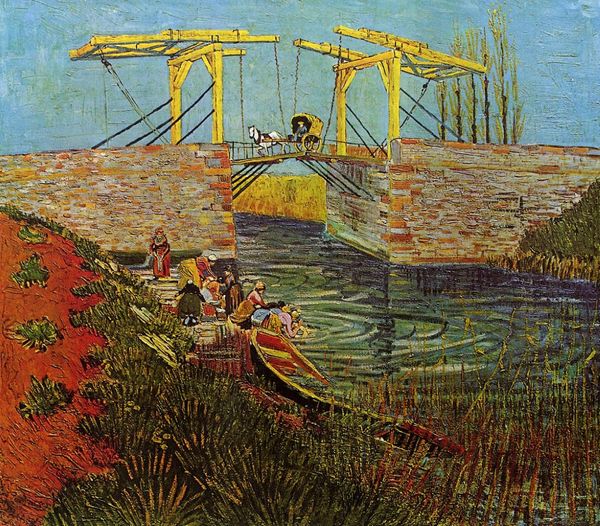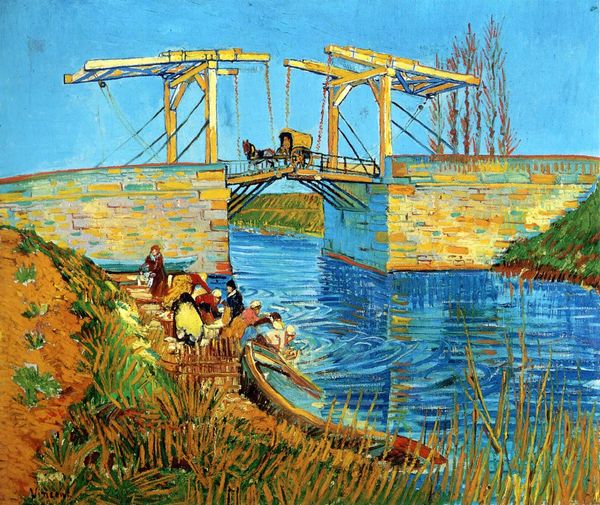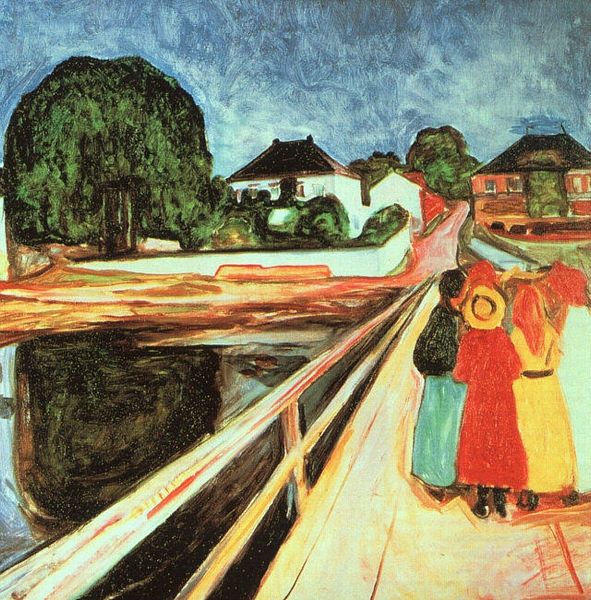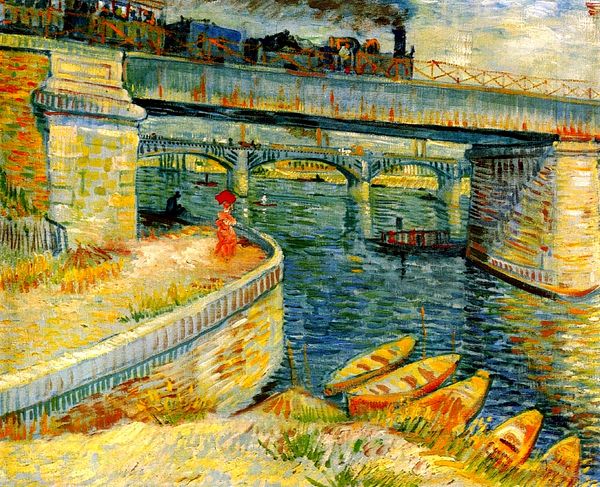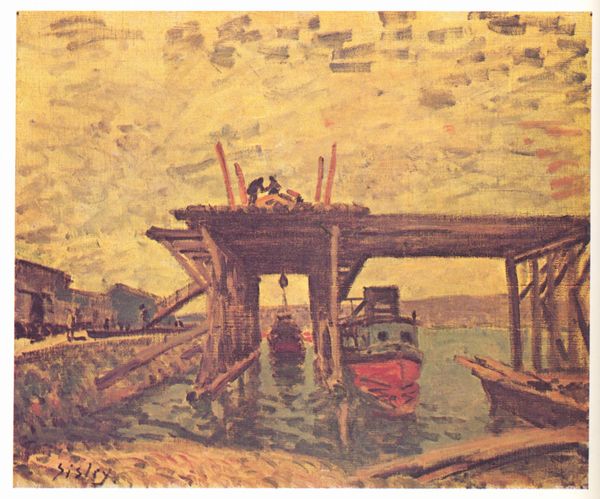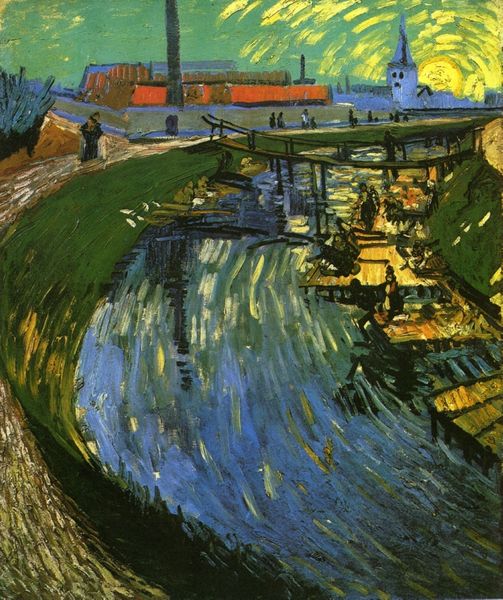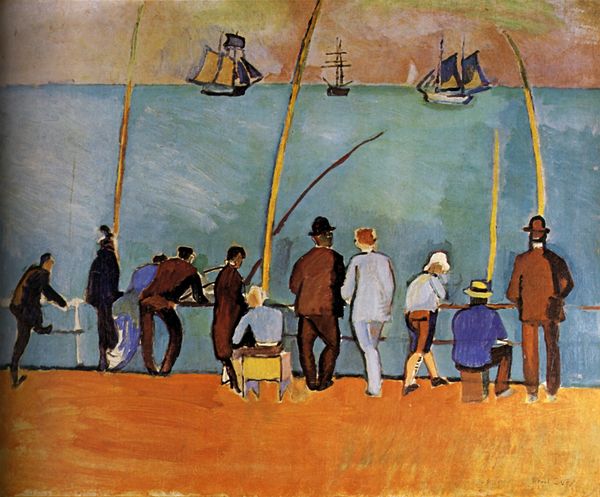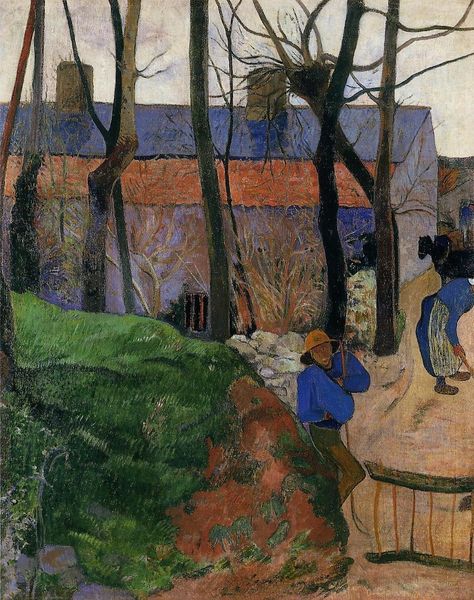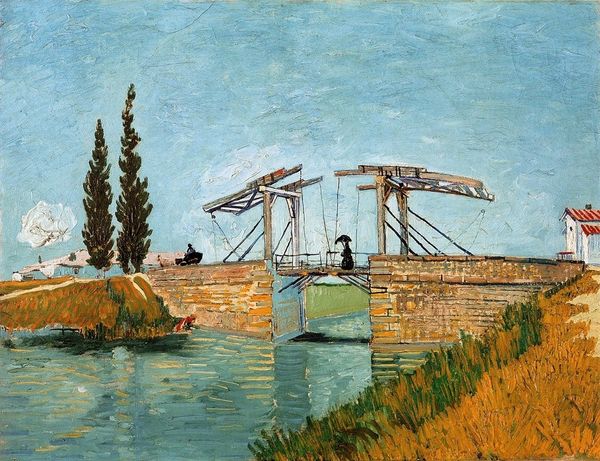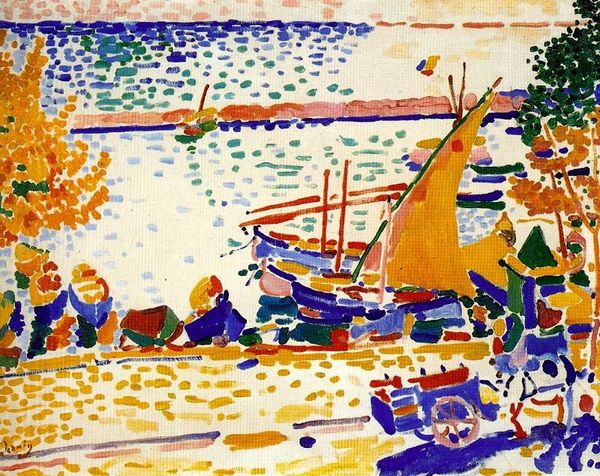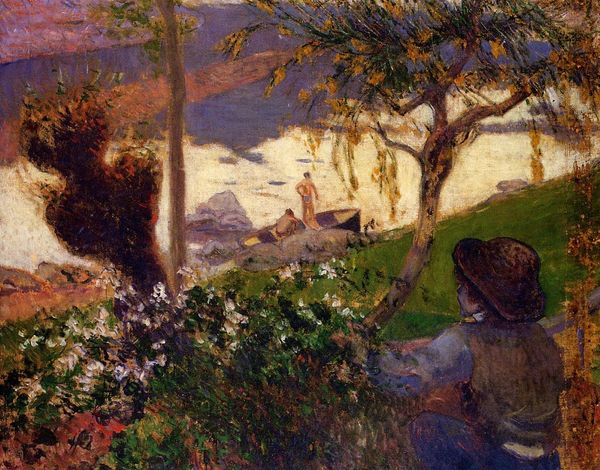
painting, oil-paint
#
painting
#
impressionism
#
oil-paint
#
landscape
#
oil painting
#
genre-painting
#
post-impressionism
Copyright: Public domain
Curator: Van Gogh painted this rendition of The Langlois Bridge at Arles with Women Washing in 1888. What’s striking to you initially about this piece? Editor: Well, it feels…optimistic. Despite the probable hard labor, the figures aren’t downtrodden. There's something joyful about the vibrant blues and yellows set against the brick. Curator: Indeed. What strikes me is how Van Gogh positions labor – women washing clothes – within this landscape. The bridge, an engineering marvel of its time, dominates the composition. Van Gogh was quite interested in these more industrialized subjects at this time, wasn't he? Editor: Absolutely, and it makes me wonder about access, who got to use the bridge versus who was stuck at the river’s edge. Was Van Gogh consciously commenting on class, on gendered divisions of labor, or simply capturing a picturesque scene? The bright colours mask social disparity perhaps. Curator: I see it as his fascination with modern life, though I agree with your suggestion that there is tension. His bridge is a structure built in tandem with the surrounding social scene and his portrayal complicates a straightforward understanding. It highlights, but perhaps doesn’t critique, such labour. Editor: That bridge looms large – this is so obviously an imposing image, yet on close looking it does feel inviting and almost naïve with its heavy, dark, confident, mark-making. It's deceptive in how cheerful it seems on the surface. Curator: It's undeniable that he wanted to convey more than just documentary evidence, or the bleakness often portrayed at that time. Editor: Right, and these women washing, an essential service, yet mostly unthanked and underpaid. This piece has me considering how essential, life-sustaining activities were then and are still undervalued today. How far, if at all, have we moved in the 130 years since this painting was completed? Curator: Yes, the questions raised echo long into today. It gives me a great deal to reflect on regarding the public role and continued legacy of art in our modern socio-political environment.
Comments
No comments
Be the first to comment and join the conversation on the ultimate creative platform.
